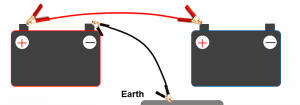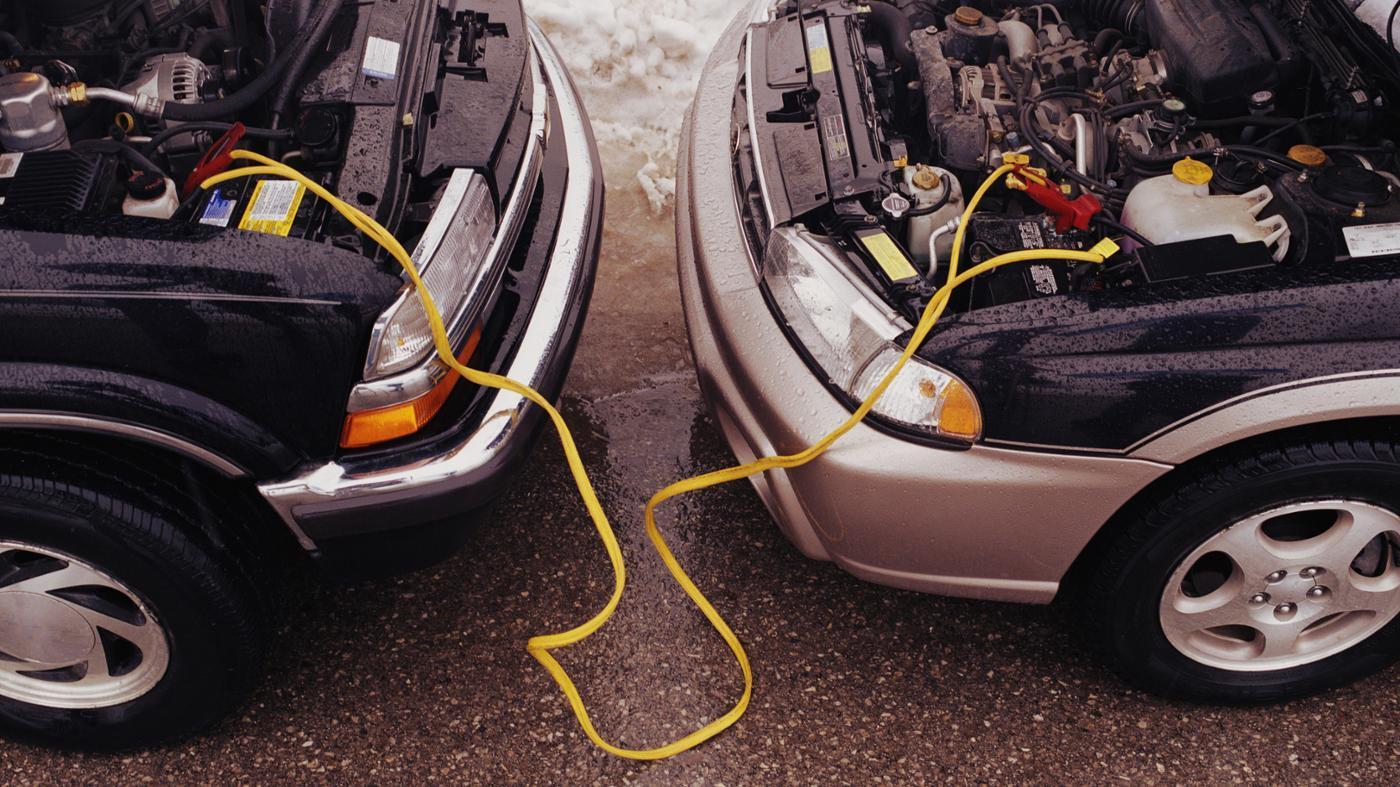Jump starting a car can be an easy task if you know what you are doing. However, there are several precautions you should take in order to avoid battery and vehicle damage. Follow our guide to correctly jump-start your car without the risk of causing harm to either vehicle.
1. Make sure the two vehicles are close together.

Move the charger vehicle as close as you can to the vehicle that needs jump-starting. Ensure that the two vehicles aren’t touching each other in any way.
To avoid toxic exhaust fumes, try to avoid performing the jump-start in a garage or confined area.
2. Ensure the ignition is off in both vehicles.
Reduce battery strain by ensuring that both vehicles are off with the handbrake on. Make sure that the radio, headlights, air conditioning and interior lights are off in both vehicles. Both vehicles should be in park (automatic) or neutral (manual).
3. Connect the cables.

Open the bonnets on both vehicles and locate the batteries.
Connecting the leads properly is important because reversing the battery terminals can cause damage to the battery, possible explosive gasses and damage to the electronic components and wiring of both vehicles.
Use the jump-starting kit safely
Be sure not to let the jumper cables touch during the process, as this can cause a direct short circuit which could melt the jumper wires and damage the jump-starting vehicle.
If you are inexperienced or uncertain, we recommend that you buy a portable jump-starter or consult a trained mechanic.
Firstly, connect the red leads to the positive (+) terminals of each battery.
Secondly, connect one black lead to the negative (–) terminal of the working battery. Connect the other black lead to a solid metal component (earth) on the vehicle with the flat battery. The metal block on the front of most engines makes a good earth.
Do not connect the black lead to the negative terminal of the discharged battery. This can cause an electrical spark which can ignite hydrogen gas in the battery.
4. Start the car with the charged battery.
Starting the charger vehicle will help begin the transfer of electricity into the flat battery. For best results, leave the vehicle idling for 5 minutes.
After this, test the (previously) flat vehicle. It should start without a problem. If it still fails to start, the car may have a starter system fault.
Once the vehicle with the previously flat battery is running, turn off the charger vehicle’s engine.
5. Remove the jumper cables.
Remove the negative cable from the earth, then from the other vehicle’s negative terminal. After this, remove the positive cable from the newly charged vehicle, followed by the charger vehicle.
6. Drive the newly charged vehicle.
The best way to fully charge a vehicle is by driving it. Within 30 minutes of driving, the battery should be capable of restarting your car.
How to avoid this problem in the future:
Car batteries lose charge over time, especially if they are often run flat. In order to preserve the life of your battery and avoid jump-starting, you should:
- Use the stereo, headlights and AC sparingly when the car’s engine isn’t running.
- Make sure all doors are properly closed when you exit the vehicle and interior lights are turned off.
- Batteries drain over time, even if the car is off. If you are not going to use the car for a long period of time, consider disconnecting the battery.
- Get your charging system tested.
When you receive a battery replacement through Grimmer Motors, your battery will be sold and recycled rather than being placed in a landfill.
The money that Grimmer Motors receives through selling the old battery will be put towards planting trees in Hamilton.


